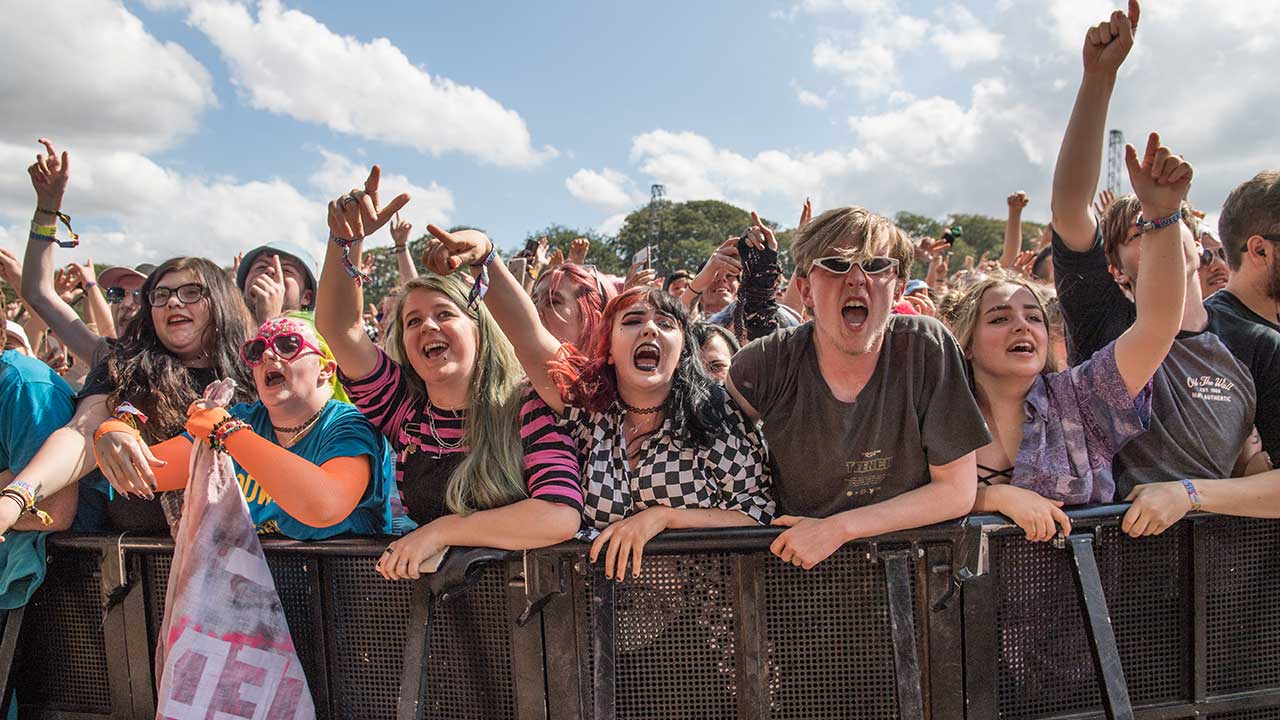Earlier this month, Reading & Leeds festival announced the first batch of artists set to appear on its 2022 line up. Surprisingly – for those who know anything about how the public tend to respond to festival announcements – the news went down a treat with most music fans. With top spots being given to Rage Against The Machine, Arctic Monkeys and Bring Me The Horizon, among others, for the first time in a long time it felt like the festival might just be taking alternative music seriously again.
Born as a blues and jazz festival in 1961, R&L gradually broadened its horizons. Blues shifted to prog rock at the end of the 60s, then moved through hard rock, new wave, goth, post-punk and more, before the alt-rock explosion of the early 90s saw the festival's reputation as the UK's most exciting alternative festival cemented. Come the early 2000s, that reputation shifted again, as they added some of rap and electronica’s biggest names to the mix – Jay-Z, Eminem, The Streets, The Prodigy among them. That, as far as many rock fans are concerned, was the beginning of the end. As more pop, rap and grime found its way onto the bill, rock purists began to turn their back on the festival.
But R&L’s evolving line up says more about rock’s place in the mainstream than it does the festival itself: since its formation, the festival has proven itself adept at flexing to what new generations of music fans want to hear. The line up simply reflects that in recent years, more exciting things have been happening in other rising genres. But this year sees the festival jump back onto their alternative hype, all whilst balancing artists who are currently thriving at the top of the charts. Does this mean it’s rock’s big moment to come back?
There is another obvious difference in the line-up this year, though: seeking to erase the backlash they received after releasing yet another all male line up of headliners – for the seventh year in a row – it seems like our heckling about gender diversity has finally paid off.
The discussion of gender equality has been a pivotal issue within the music industry for some years now, and inevitably becomes a hot topic whenever disappointing festival line-ups are announced. But next year will see R&L feature headline performances from mammoth rap sensation Megan Thee Stallion and synth pop singer-songwriter Halsey. Between the two of them, Megan and Halsey accumulate a mammoth 71.6 monthly Spotify listeners. An additional 11.3 million more than last year's – three – male headliners put together. Progress? Well, sort of.
Whilst this isn’t about numbers, if there’s one thing this tells us, it’s that it's time festivals pulled their weight and diversified their line-ups. Looking at the line up, it feels clear that R&L have made an effort to make more space for rock and alternative music in 2022. With Megan and Halsey now on the bill, the festival has been praised for breaking its gender diversity dry spell. But why has this effort not been extended to the women who are reclaiming a space for alternative and rock music to thrive in the face of mainstream? Their exclusion is telling of just how little women are still taken seriously within the rock scene.
It's great that R&L are making more space for rock on its bill, but this can't begin and end with white men of a certain age. Paramore, Evanescence, Skunk Anansie, Poppy: rock is heaving with acclaimed female acts who could easily hold headline slots. Just this year we’ve been blessed by the incredible work of fast-rising London duo Nova Twins, Witch Fever, Spiritbox, Cassyette, Deep Tan, MM@TA. We can’t emphasise enough: it’s really easy for festivals to do better.
Right now, rock is more vital, interesting and relevant than it’s been for ages. Take the angst of UK duo Bob Vylan, who are fusing furious anarchic punk with grime. Then there’s Wargasm, who are setting riotous spoken word against hellish screamo. Rock is arguably the most exciting we’ve ever seen it, and is being revived by acts who are reinventing an authentic and innovative future for rock music.
It feels like R&L are slowly but surely paving a way for these artists, and 2022 feels like the year where rock could come back for good. There are ample bands outside the mainstream who are hungry for the stage, and are proving with their albums, monthly listeners and press coverage that they have what it takes to evolve rock again. Now, it seems R&L – and the music world in general – might be listening, with these new artists renewing the genre’s relevance.
If R&L continues to target these artists for its 2022 bill – paying attention to the marginalised people who have been left out of rock for so long – it could be a festival that finally celebrates rock as the whole, diverse and vibrant community it is.
